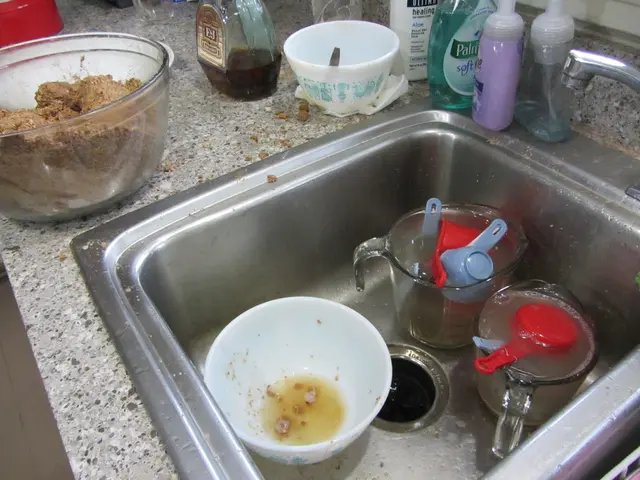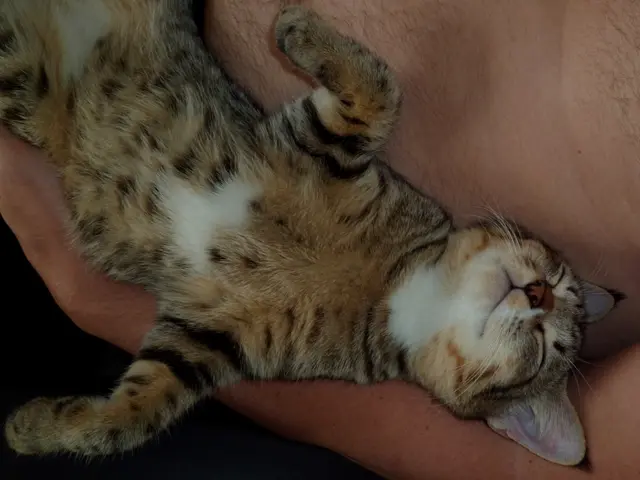Revised Article:
Might intestinal microorganisms hold the solution for combating muscle decline in advanced age?
Dive into the fascinating world of gut microbes and their impact on muscle health! A recent study led by scientists at Nanyang Technological University, Singapore, reveals that these microorganisms play a significant role in managing muscle mass and functionality.
The study, published in Science Translational Medicine, also sheds light on how muscles function, grow, and communicate with the nerves controlling movement. More importantly, the researchers found potential new directions for addressing age-related loss of muscle mass and strength.
The research team compared the strength and movement of exercising mice, categorizing some as germ-free and devoid of gut microbes, while others were healthy mice with normal gut microbiota. Strikingly, the mice lacking gut microbes demonstrated weaker skeletal muscles and lower energy production compared to their counterparts.
Supplementing the germ-free mice with gut microbes from healthy mice led to increased muscle mass and strength, and partial restoration of muscle growth and function.
Senior study author, Prof. Sven Pettersson, emphasizes, "These results strengthen the evidence of gut microbes acting as crucial gatekeepers to human health, providing new insights into muscle mass maintenance regarding aging."
Gut Microbes: Essential Partners
Mounds of research point towards gut microbes' virtual collaboration with human cells in various essential functions, including metabolism and immunity. For instance, changes in gut microbes have been observed in obesity, liver disease, diabetes, cancer, and neurological disorders.
The recent findings pave the way for further research to determine how gut microbes and their secreted substances can potentially serve as targets for improving muscle strength in older individuals, particularly relevant for countries with rapidly aging populations like Singapore.
Aging and Muscle Loss
Muscle loss, a hallmark of sarcopenia, is a common aspect of aging, leading to physical impairments like falls, fractures, and disability. One mechanism the researchers investigated was the interaction between gut microbes and muscle-nerve communication.
The mice with no gut microbes exhibited reduced levels of essential proteins for movement, necessary for the formation and operation of nerve-muscle junctions that facilitate communication between nerve cells and muscle fibers. Fortunately, transplanting gut microbes restored these proteins in the germ-free mice.
Mitochondrial Problems
The research also uncovered problems with energy production in skeletal muscles among the germ-free mice. They appeared less able to make and utilize mitochondria for energy production. Transplanting gut microbes from healthy mice improved mitochondrial enzyme activity and energy production in the germ-free mice.
In conclusion, gut microbes play a pivotal role in maintaining muscle health by regulating inflammation, improving protein absorption, and enhancing energy production via short-chain fatty acids (SCFAs). Dysbiosis, or an imbalance in the gut microbiome, can contribute to muscle wasting in aging individuals, making health gut microbiome management crucial for preventing muscle loss.
- The essential role of gut microbes in health-and-wellness extends beyond metabolism and immunity, as they also contribute significantly to muscle health.
- Aging and muscle loss, a common problem linked to sarcopenia, can be linked to the interaction between gut microbes and muscle-nerve communication, as shown by the recent study.
- As we age, the balance of our gut microbiome (fitness-and-exercise) may shift, leading to dysbiosis, which can potentially contribute to muscle wasting and make gut microbiome management vital for preventing muscle loss, especially in older individuals and rapidly aging populations like Singapore.







